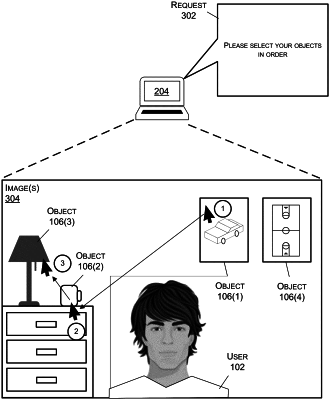| CPC G06V 40/50 (2022.01) [G06V 20/00 (2022.01); G06V 40/172 (2022.01); H04L 63/0861 (2013.01)] | 18 Claims |

|
1. A system comprising:
one or more processors; and
one or more non-transitory computer-readable media storing instructions that, when executed by the one or more processors, cause the system to perform operations comprising:
receiving first image data generated by a first user device;
determining that the first image data represents a user;
identifying user profile data associated with the user;
sending, to the first user device, a request to select multiple objects represented by the first image data;
receiving input data from the first user device;
determining that the input data indicates a first object represented by the first image data as being at a first location and a second object represented by the first image data as being at a second location, wherein the first object and the second object are static to an environment of the user and not part of or carried on a person of the user;
storing, in association with the user profile data, authentication data associated with the first object being at the first location and the second object being at the second location;
receiving, from the first user device or a second user device, second image data;
analyzing the second image data to determine that a portion of the second image data represents the first object associated with the first location and the second object associated with the second location;
determining that the first object associated with the first location and the second object associated with the second location represented in the second image data corresponds to the authentication data that is stored in association with the user profile data; and
determining that the user is verified based at least in part on the first object being associated with the first location and the second object being associated with the second location represented in the second image data corresponding to the authentication data that is stored in association with the user profile data.
|